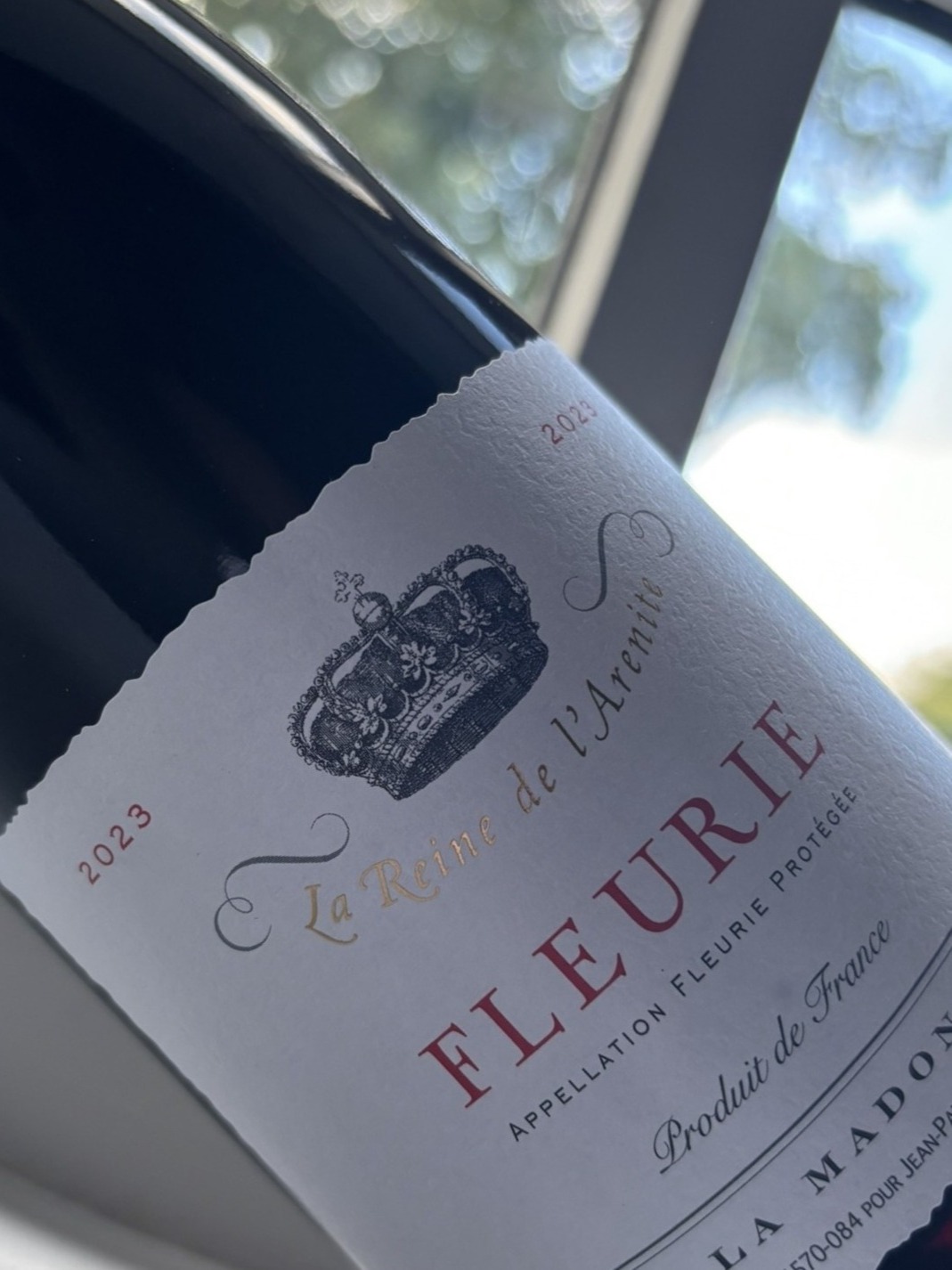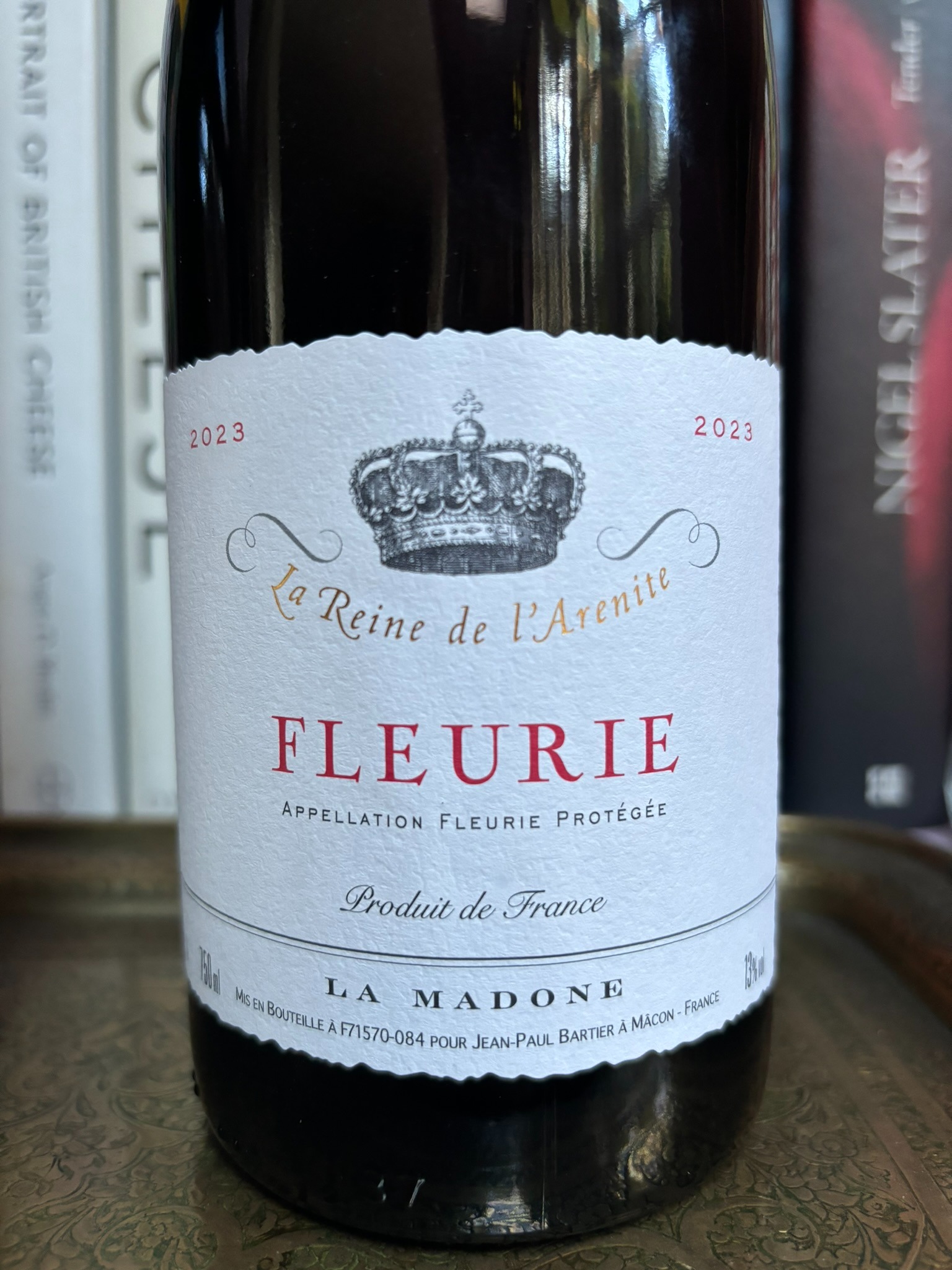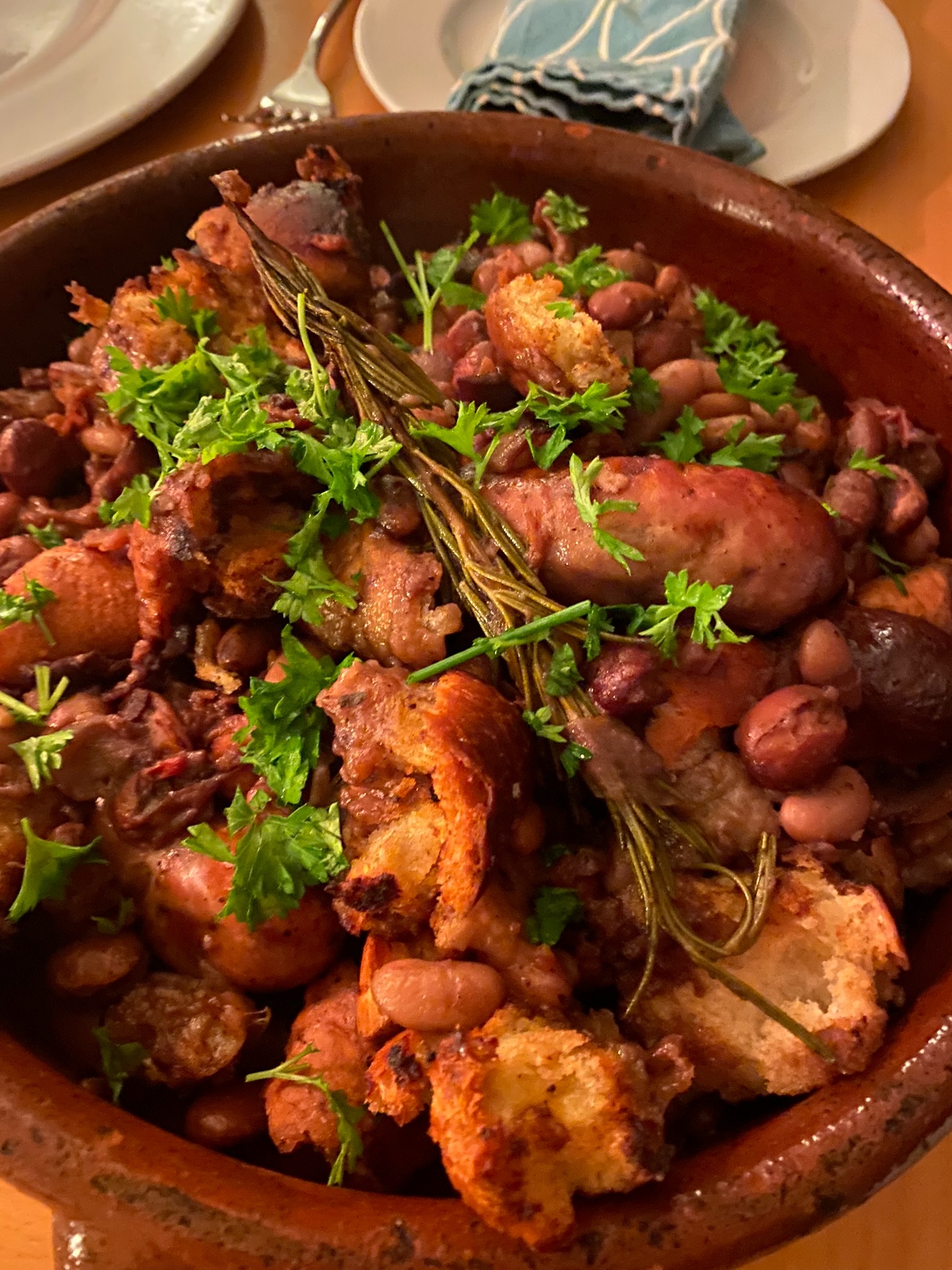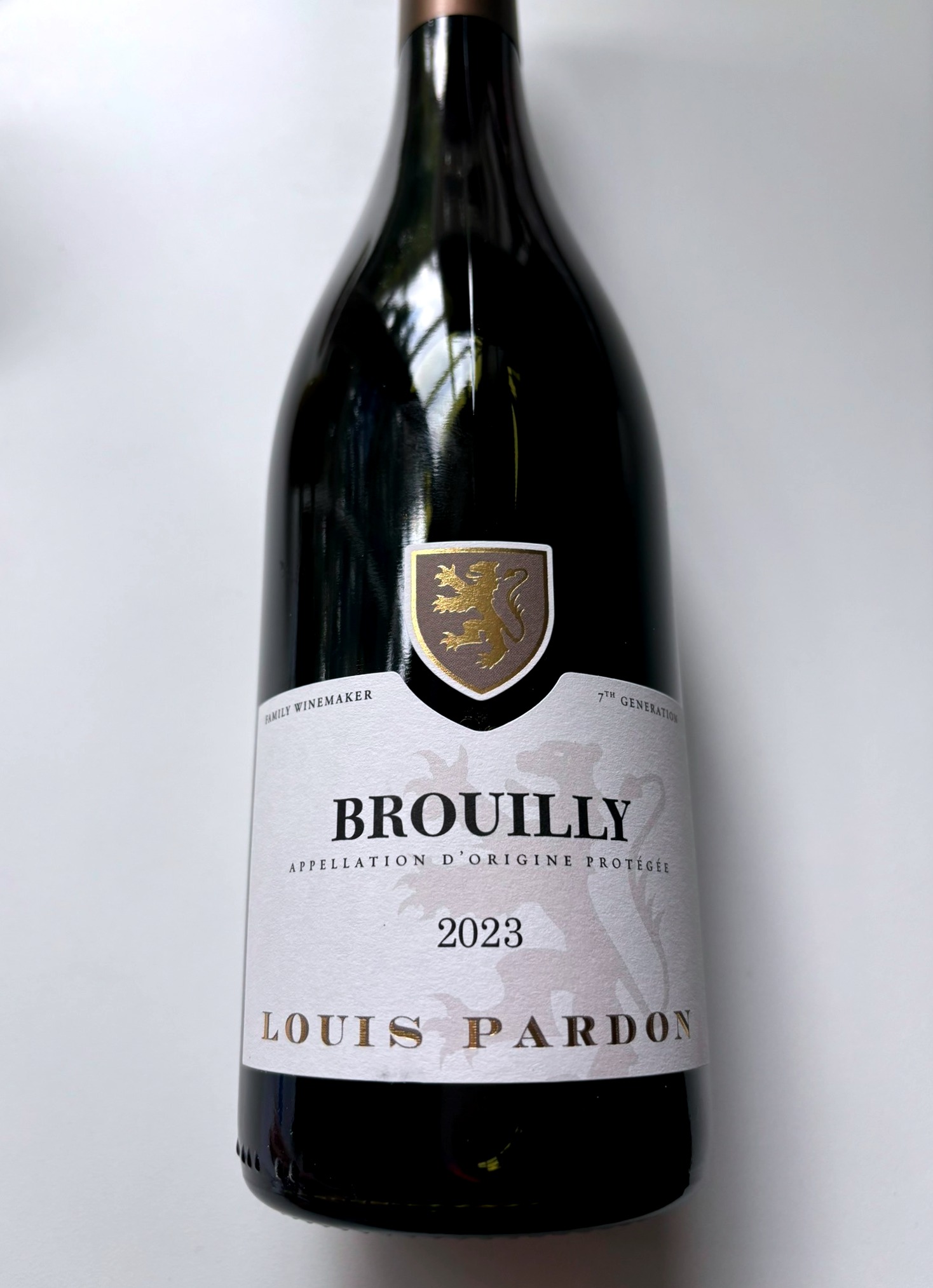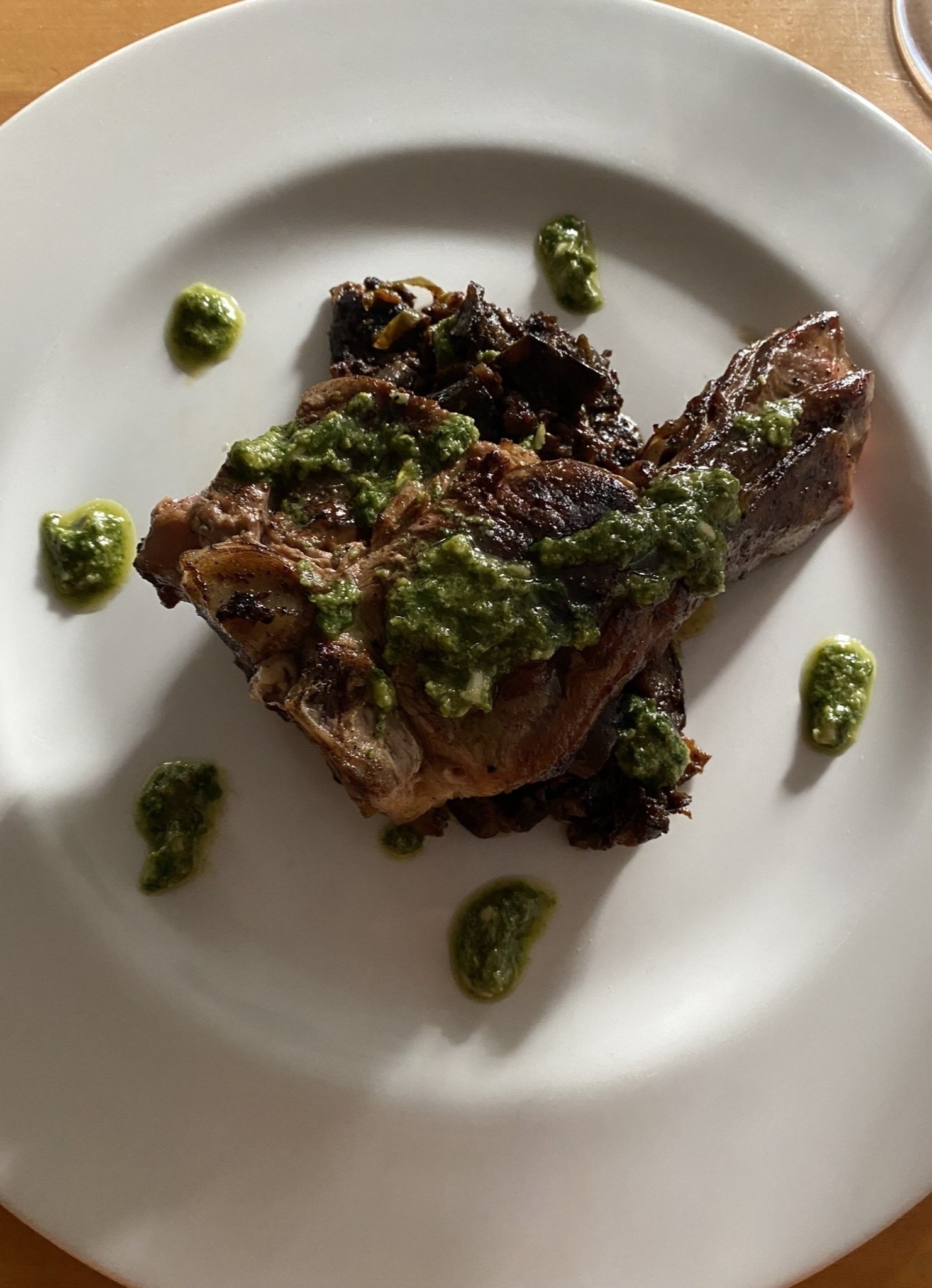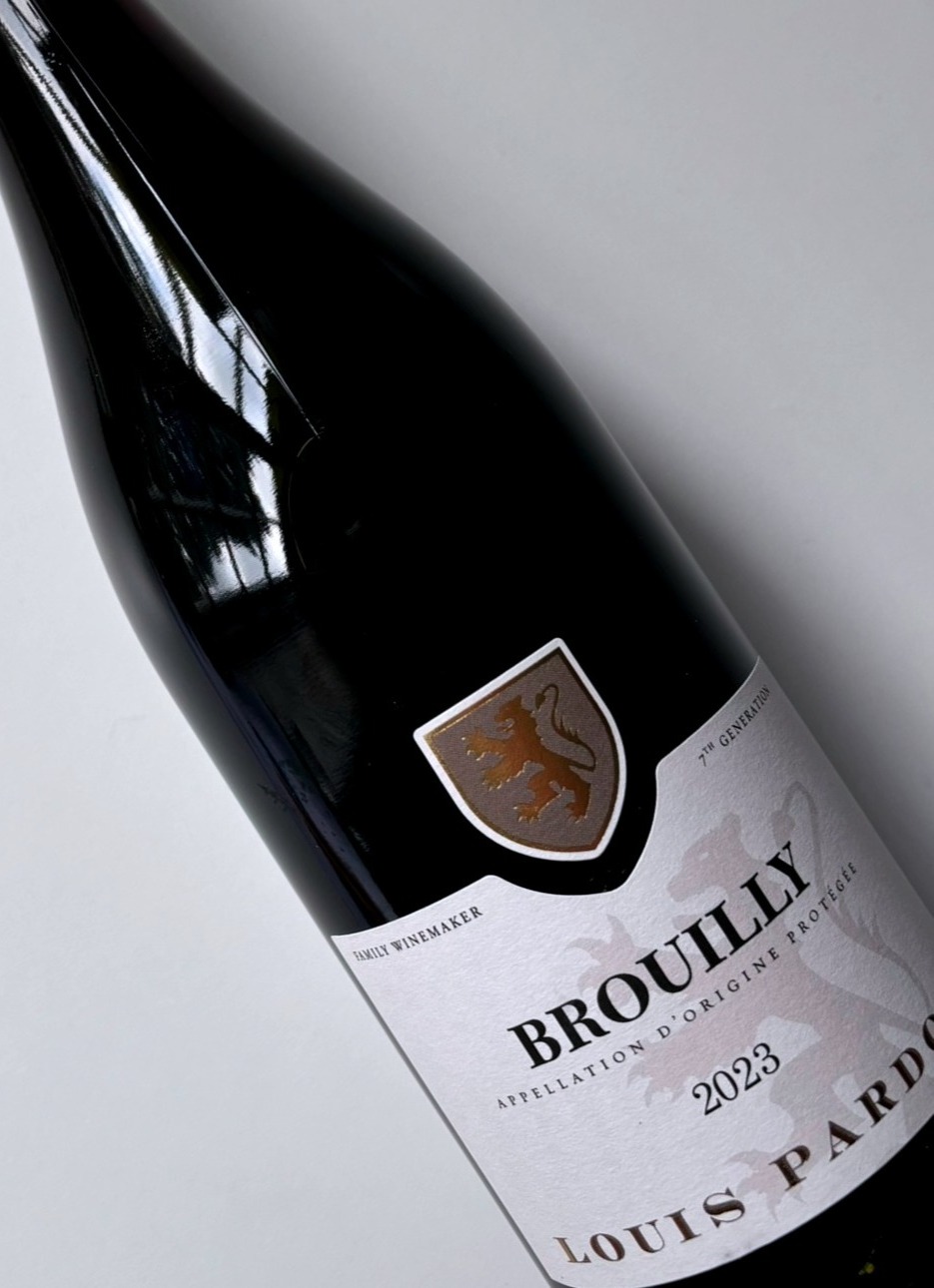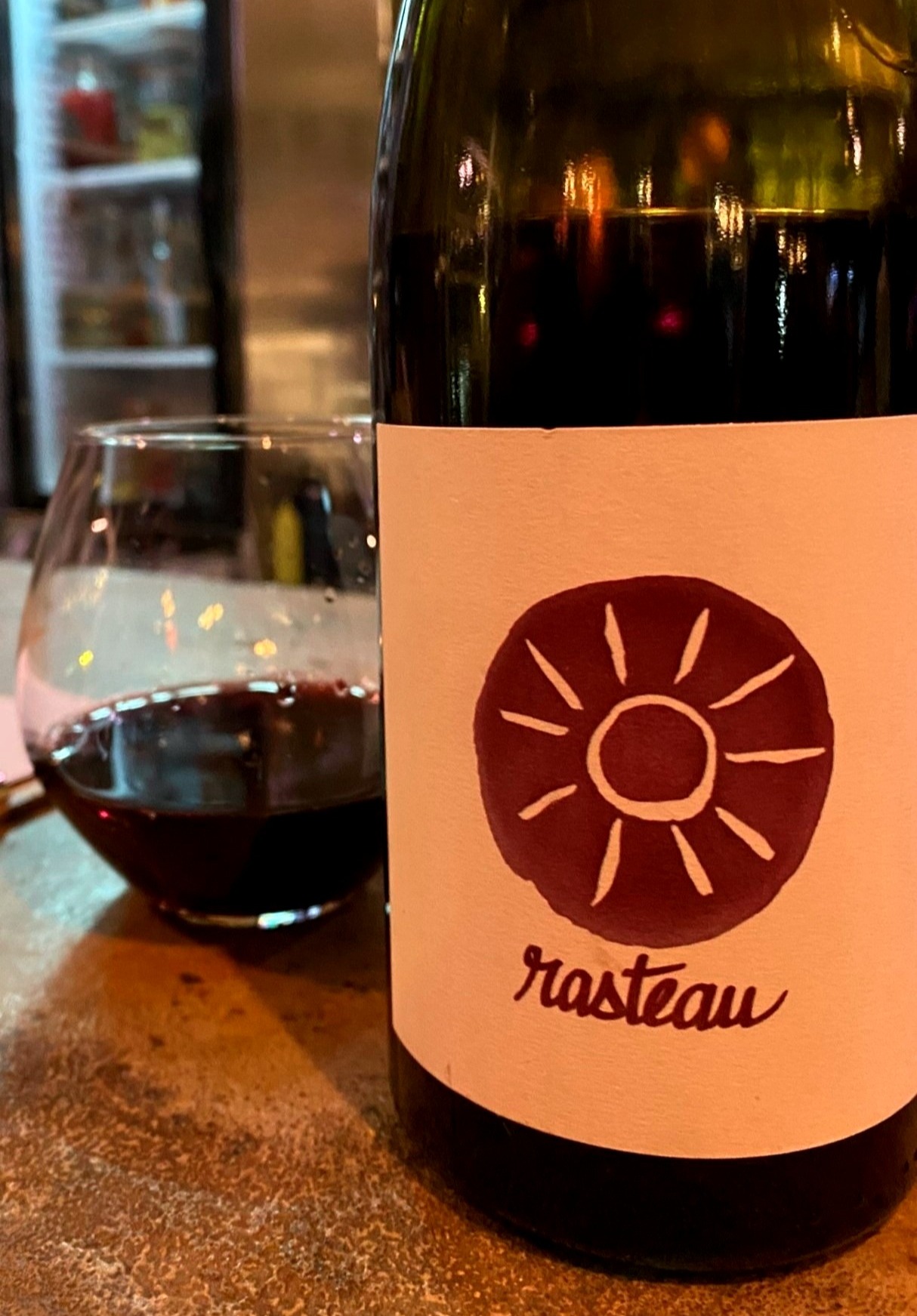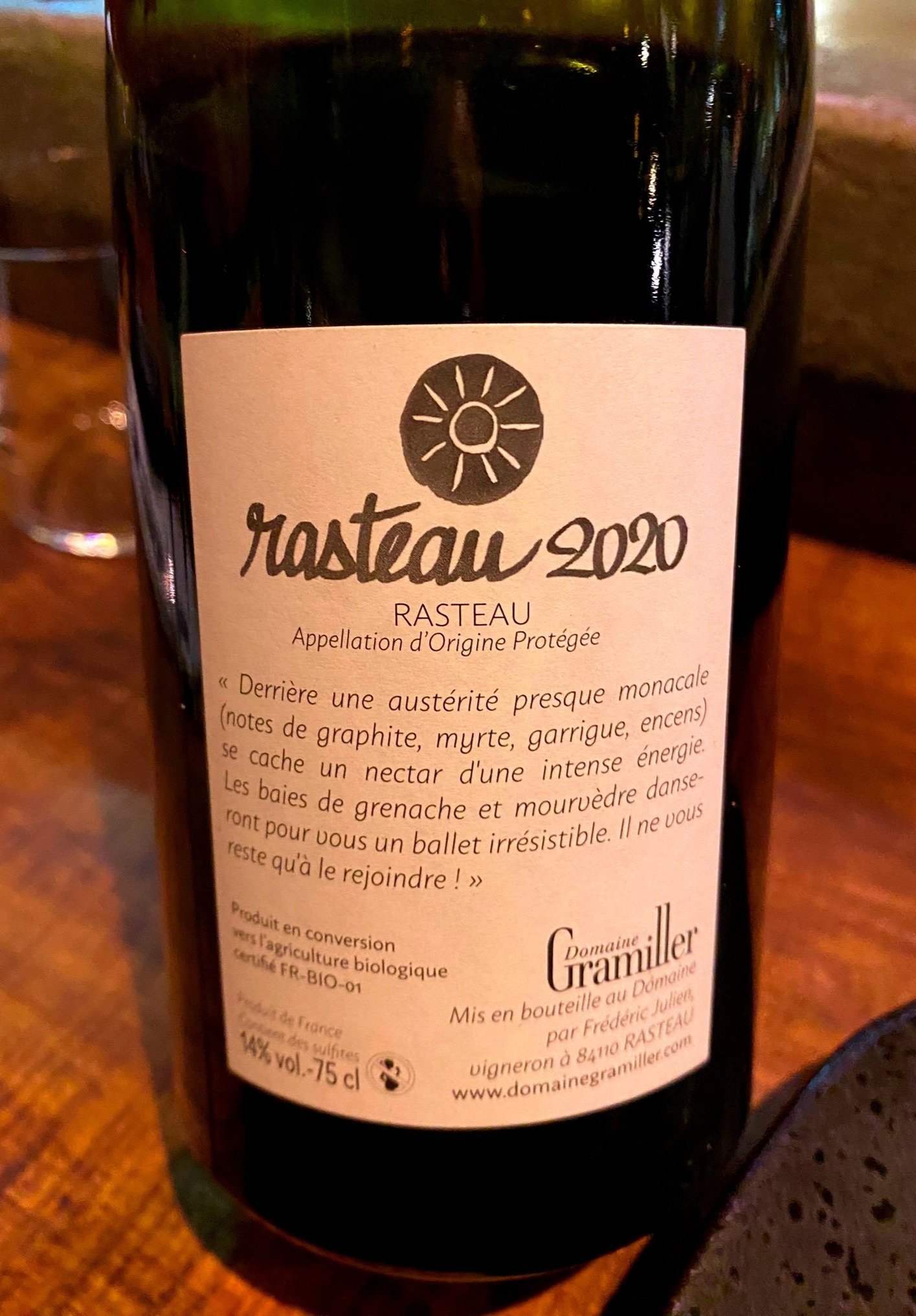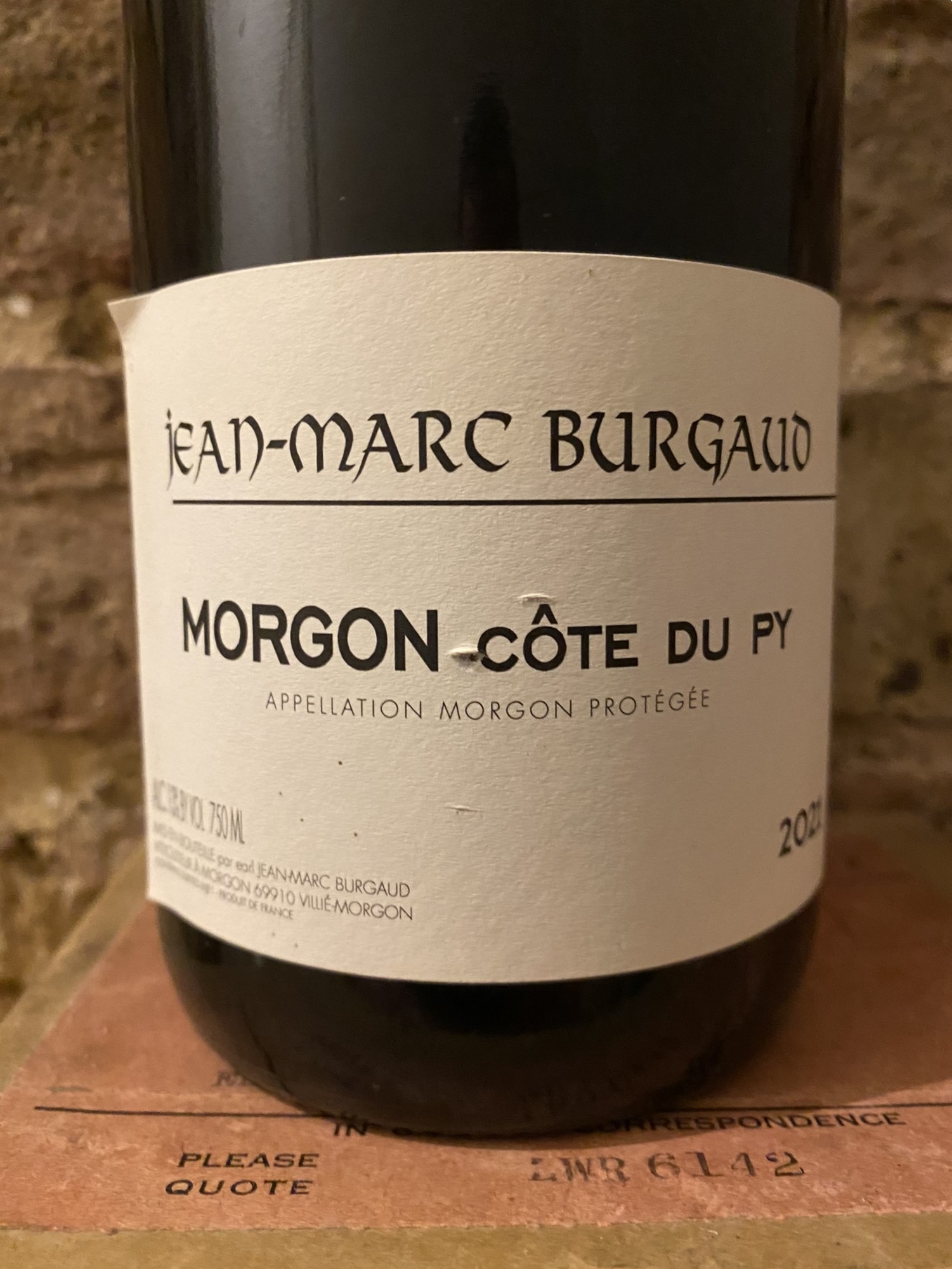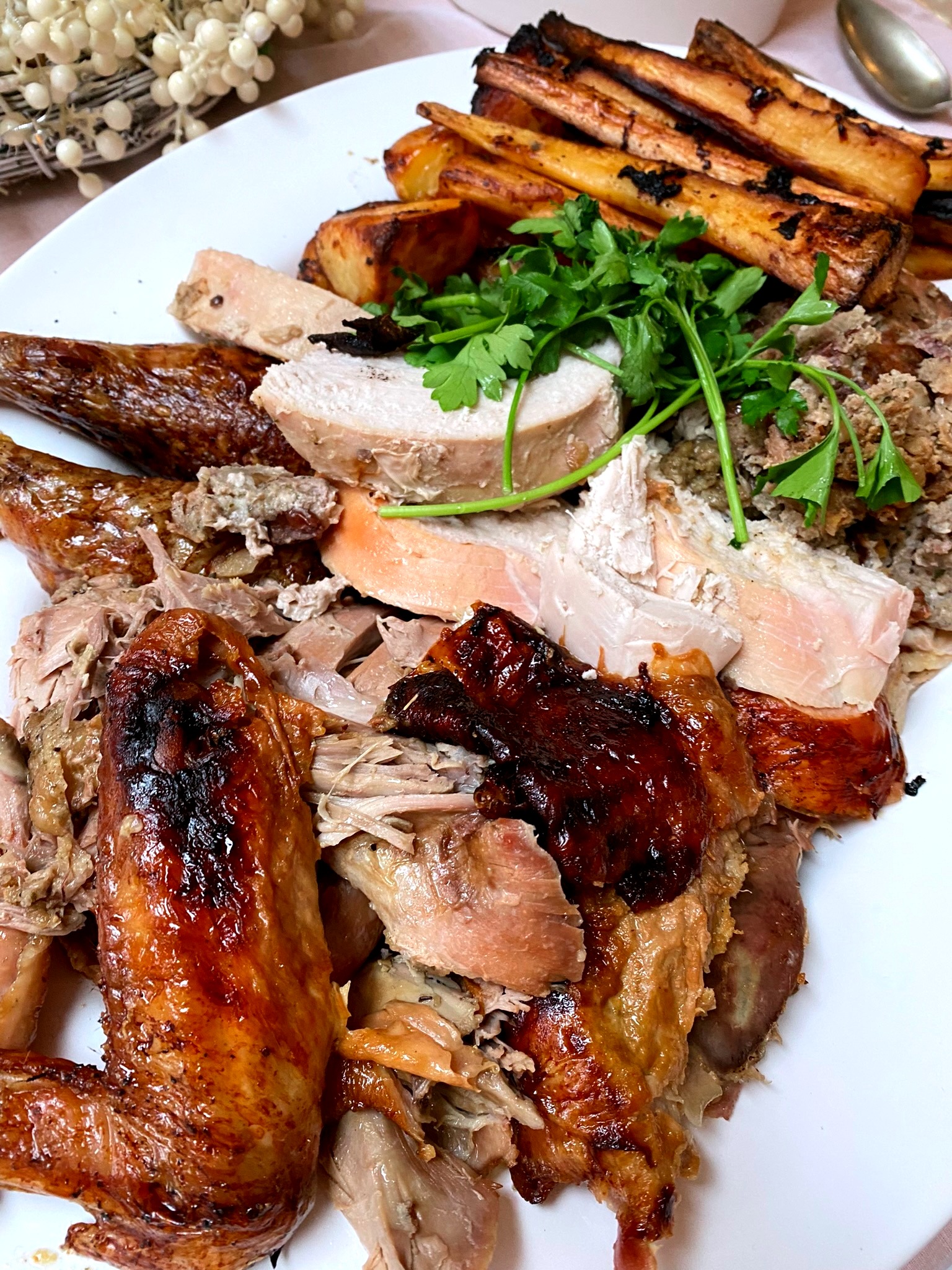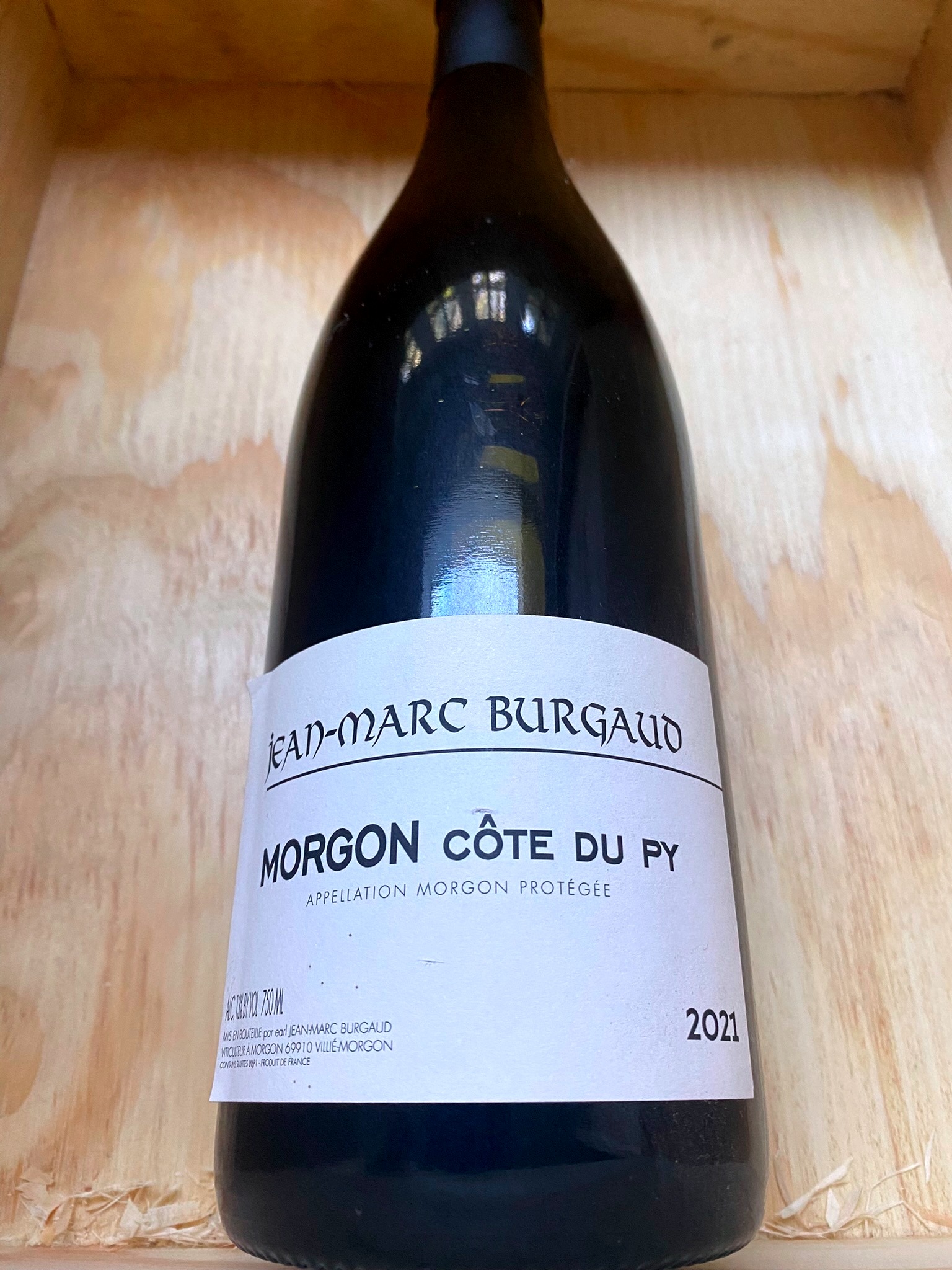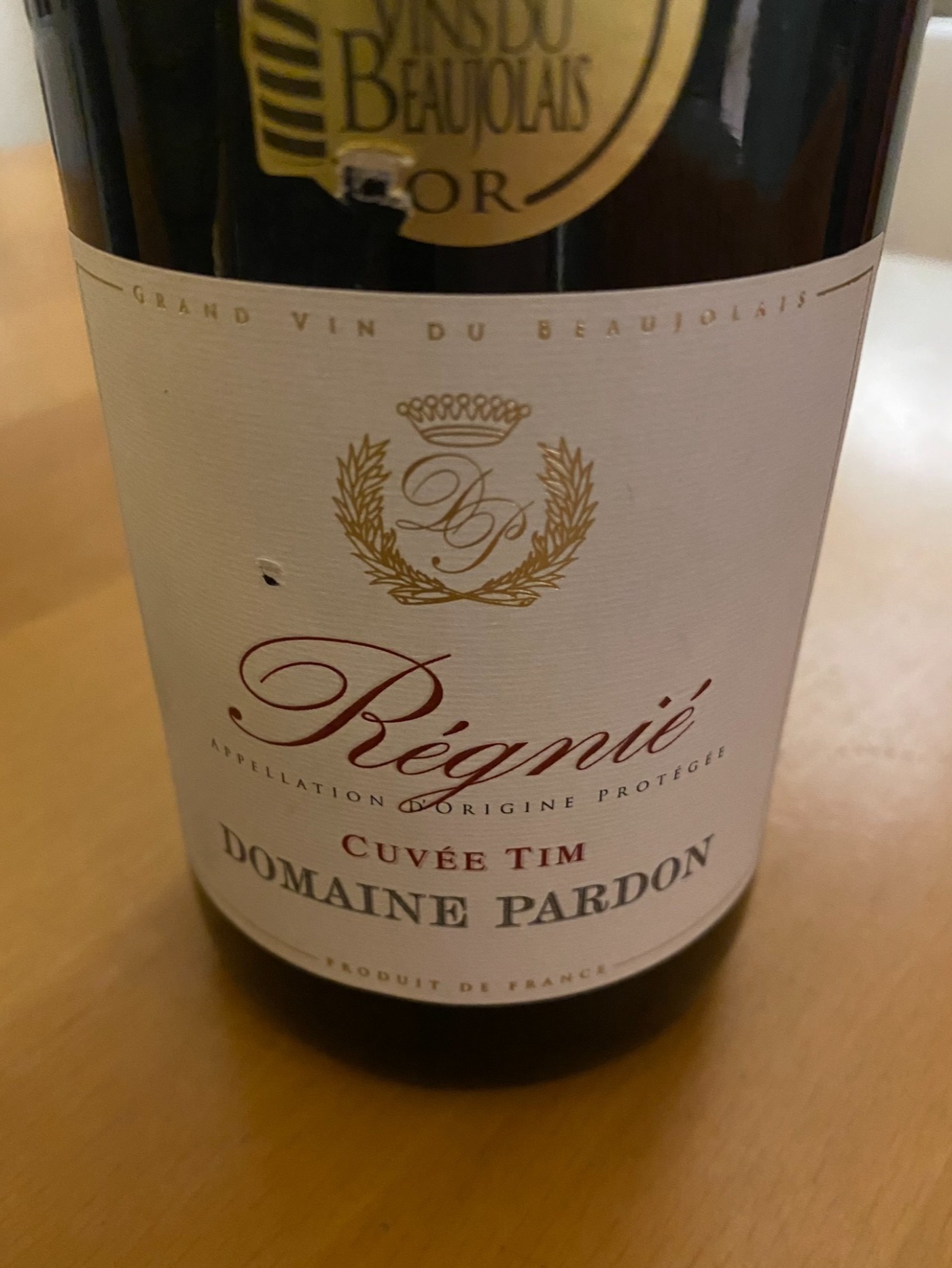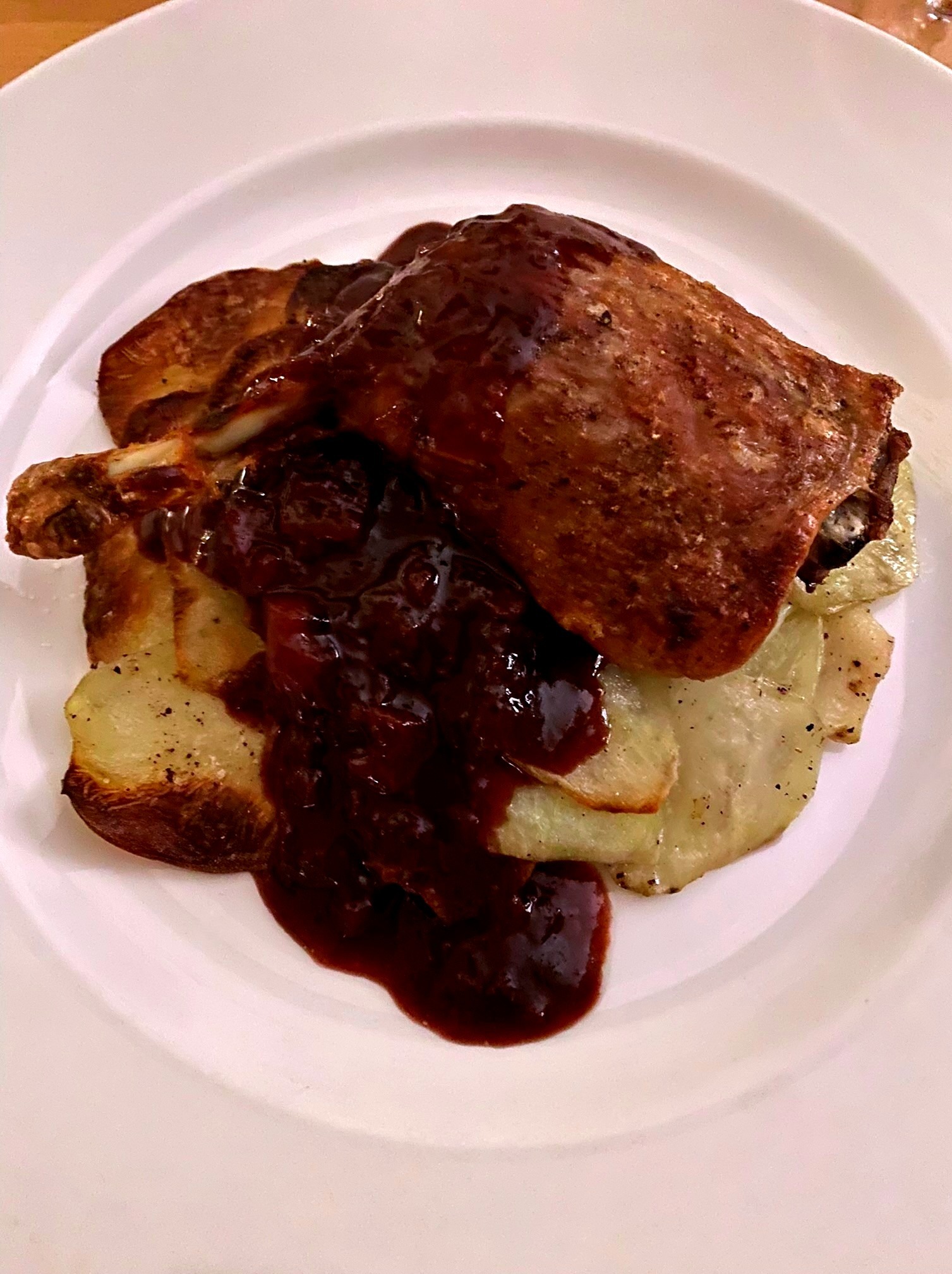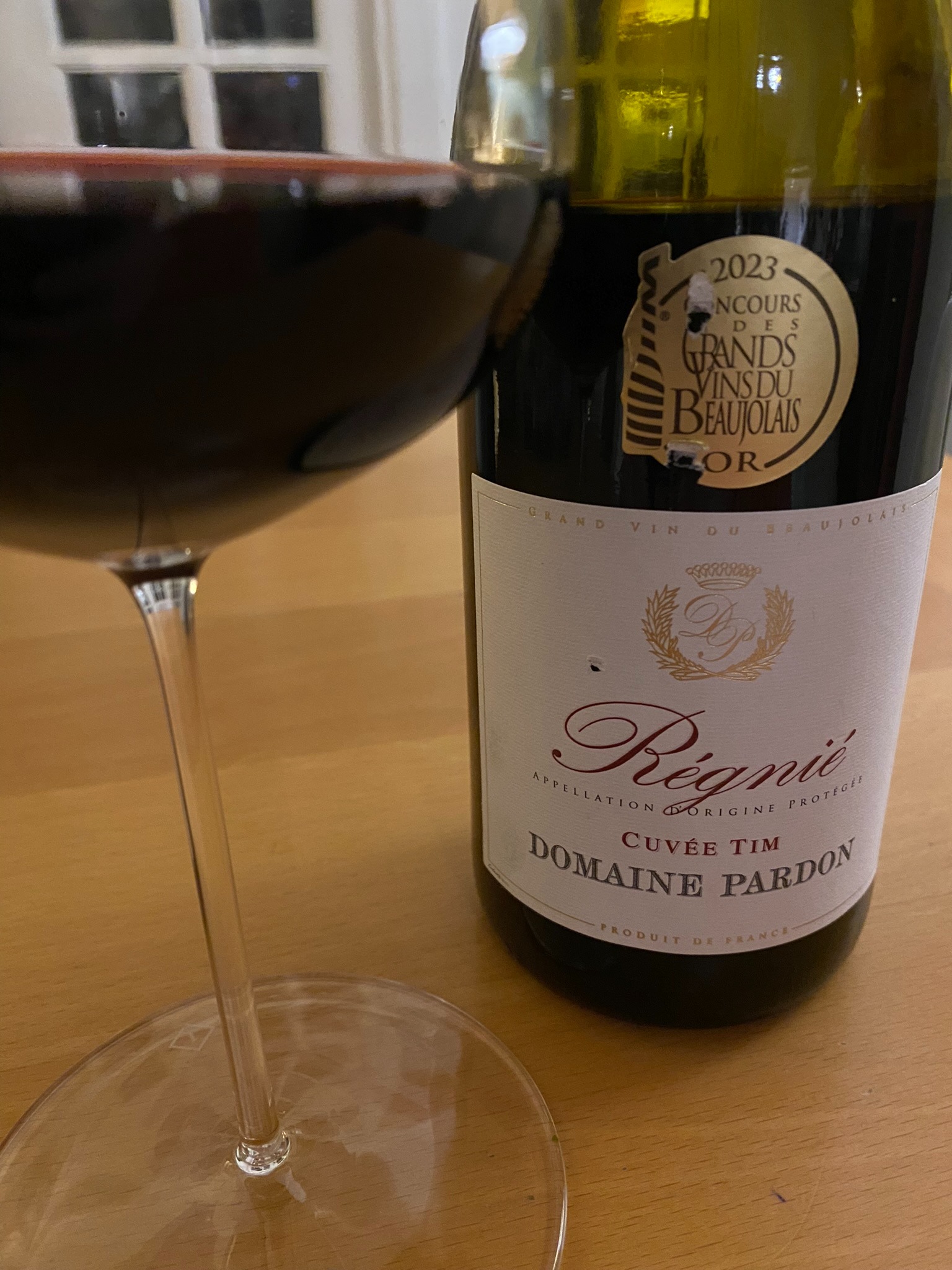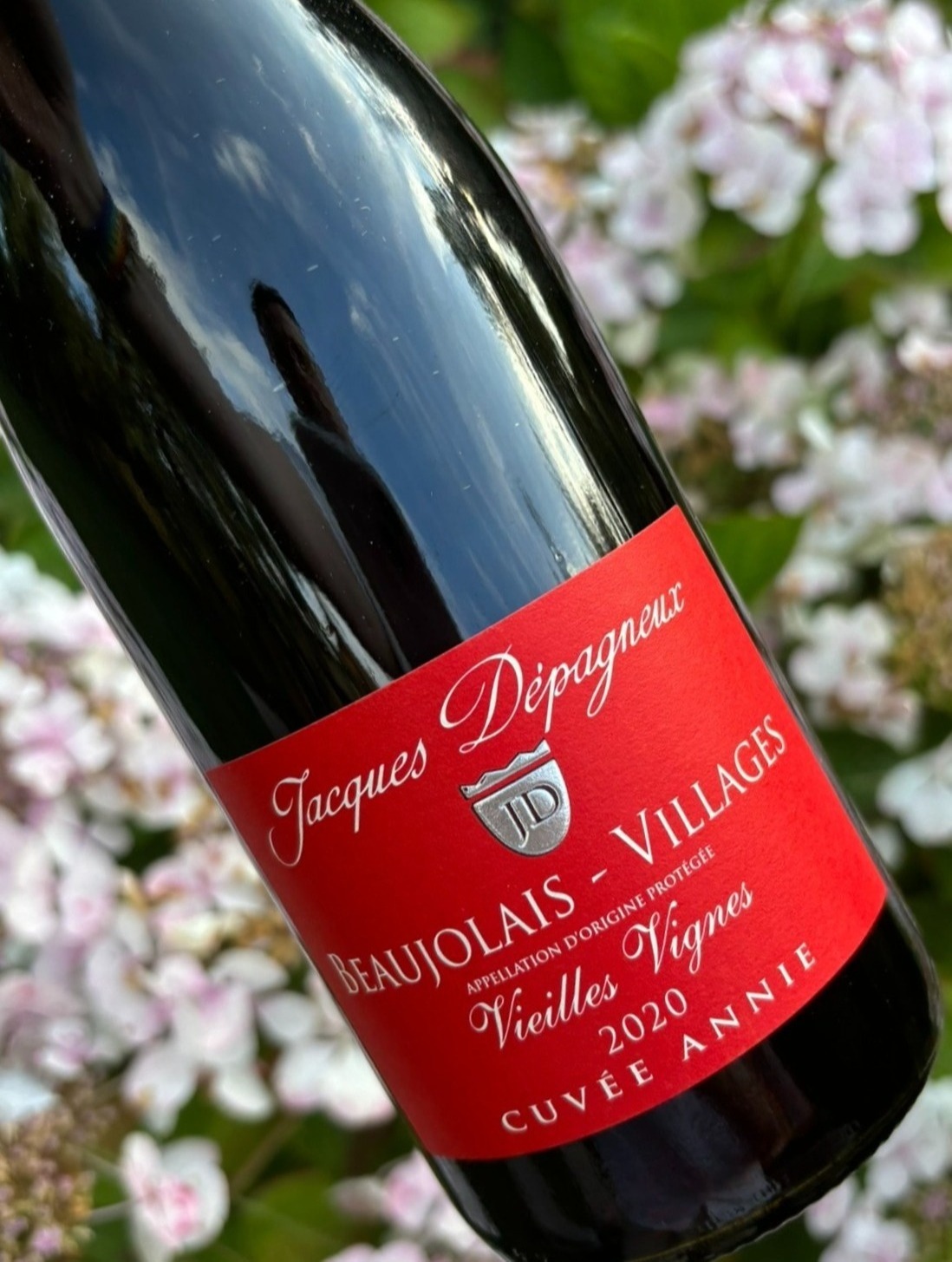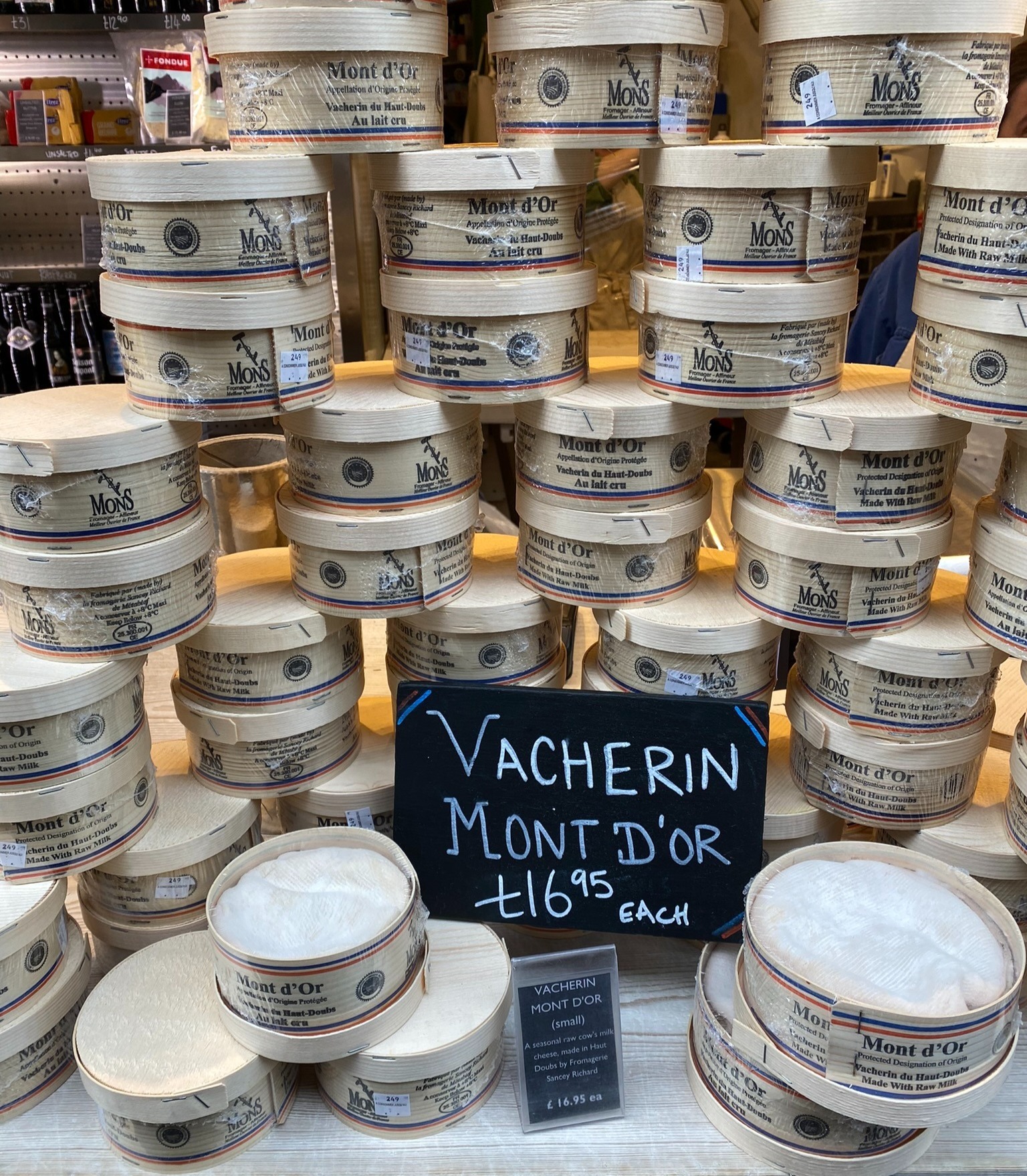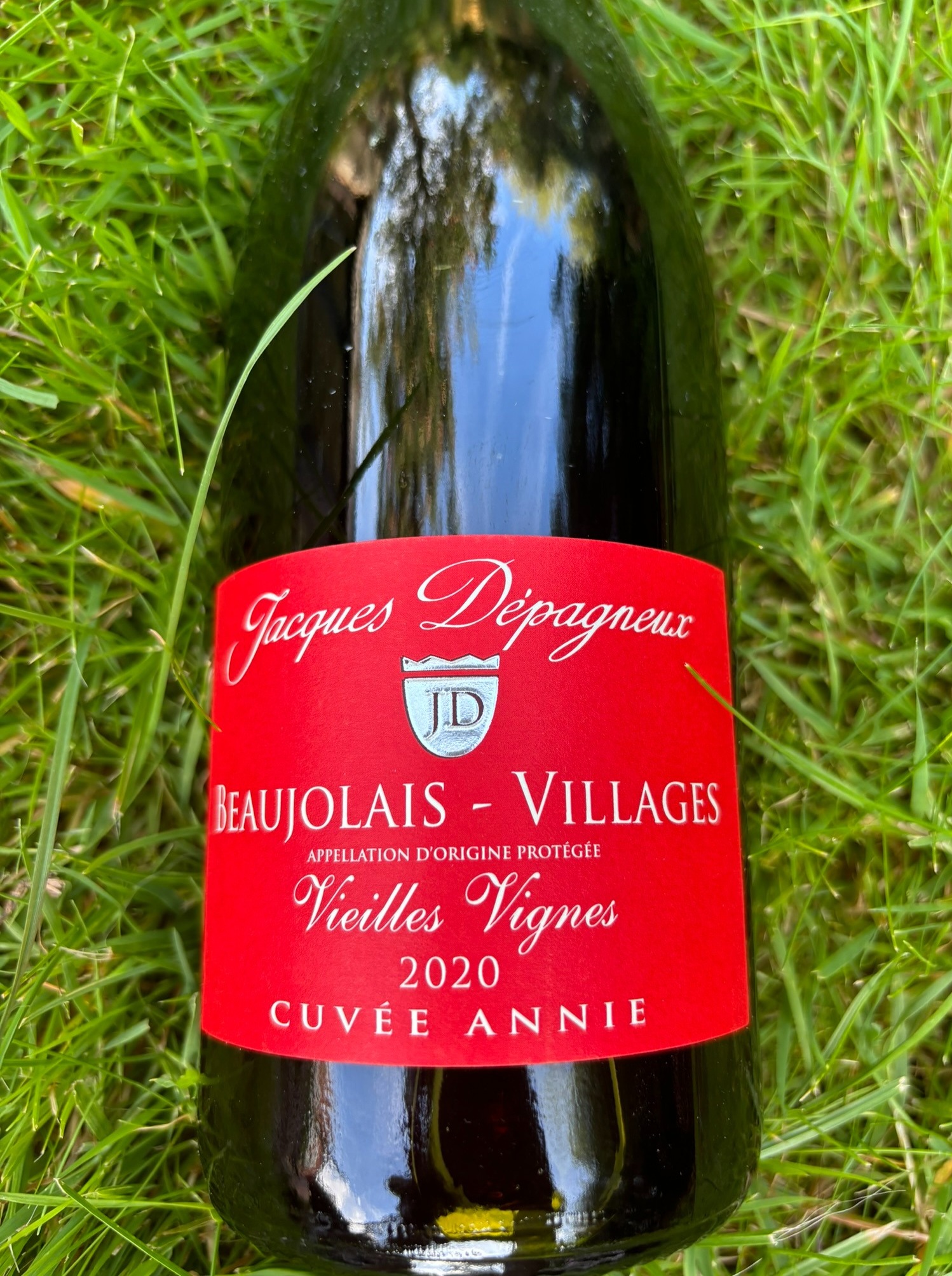

Fleurie has a tendency to be attract two adjectives with annoying regularity: 'floral' and 'feminine'. The former has its roots in a too-easy link between the cru’s name and flowers. However, a bit of digging and you’ll discover that the name Fleurie is thought to refer to a Roman legionary called Florus who settled in the area way back in the mists of time. Even given this linguistic misstep and the power of autosuggestion it entails, I think it is true to say that the wines from this cru have distinctive floral top notes: violets, even rose on occasion. The latter epithet seems unnecessarily gendered to my mind, a rather facile way of indicating the wine’s softness, lightness and filigree delicacy.
The lieu-dit of La Madonne rises up to the chapel of the same name at the highest point of the cru at 450 metres in elevation. The soils there are pink crumbly sandstone (the Arenite of this wine’s name) and still untouched by phylloxera according to Boutinot. Its vines are 40–90 years old; carefully hand-picked and skillfully treated as here, they produce wines of character, perfume and grace.
Boutinot’s take on matters retains sufficient acidity to allow the fruits to really sing beneath the bouquet of flowers that cluster on top: cherry (red and black) and raspberry foremost. This is assured winemaking with a nod to Burgundy sophistication. Tannins are soft but they are present which stops the wine from sinking into too soft a revery and means it can move from aperitif to table with ease. The Beaujolais wine council suggest pairing with local andouillette sausages but you have my permission to pass on those: they are an acquired taste … Nevertheless, there is a savoury undertow to this particular wine which adds layers to its prettiness, nuances which fatty pork products or a rich cassoulet would pick up nicely.
The beautiful chapel perched a-top Mt Brouilly is dedicated to Notre-Dame aux Raisins which rather says it all. This is the southernmost of the 10 Beaujolais crus, a land where the grape (in this case Gamay) rules supreme. The large hill (not really a mountain …) has its own appellation, the Côte de Brouilly, covering just four little (hilly!) communes: Saint-Lager, Odenas, Quincié-en-Beaujolais and Cercié. The flatter area around the hill is where you’ll find Brouilly itself.
You’d be forgiven for thinking that its southerly location suggests the warmth of a Côte d’Azur lifestyle. Yes, it’s a tad warmer here than the areas abutting the Mâconnais to the north, but it’s all relative. Remember you have the expanse of the Beaujolais and Beaujolais-village homelands and the entirety of the northern Rhône to traverse before you get a whiff of sun-baked garigue and the tang of the Mediterranean proper. But there’s just enough heat here to round off Gamay’s more overly piquant tendencies to produce affable, approachable and highly drinkable reds.
It’s quite a big area, as the crus go, and soils vary considerably, ranging from pink granite to calcareous blue stone and marl. Consequently, wines vary in specific character and there are a number of interesting, quality lieu-dits in the region to check out: Pisse-Vieille, for example and Pierreux.
Given all this, I tend to think of Brouilly as good, solid and reliable stuff but I don’t mean that to suggest either generic or uninteresting. But it is the cru I might reach for if I want friendly and consistent, a wine that will pair with a range of lighter classic French dishes without dominating the scene.
Pardon et Fils is a venerable family-run business based at the very heart of Beaujolais in Beaujeu. They make a range of wines across the 10 crus (and the wider Burgundy region) in addition to Beaujolais and Village-level wines. They also offer a white Beaujolais (Chardonnay) and an interesting 100% Gamay rosé. Their 2023 Brouilly is an elegant and silky red with rounded corners. You’ll get a punnet of quality red fruits here enrobed in a lovely, clear ruby wine. There’s something immediate, honest and celebratory about it. Frankly, just really good stuff.
It’s weighty enough for food but easily quaffable solo as well. The good folk at Inter Beaujolais, the region’s wine council, suggest carrot cake with coconut icing. Not sure I’d go that far, but it does reflect its less formal edge and the relative ripeness of the fruit that makes sweeter meat like lamb a good bet.
Cairanne has become relatively familiar on wine lists and in wine merchants. Rasteau, effectively the other half of the same rocky outcrop 20kms north-east of Châteauneuf, remains a little under the radar, however – perhaps because it’s wild and pushes at the limits of rusticity on occasion. This is Grenache territory, sometimes but not always supported by Syrah (as well as the other significant plantings of the southern Rhône: Mourvèdre and Cinsault, for example), producing wines of intense, super-ripe, red-fruited opulence. And when they are on point, they can be glorious.
Such, I am delighted to say, is the Rasteau 2020 from Domaine Gramiller (50% Grenache, 30% Syrah and 20% Mourvèdre). The much-overused tasting term “garrigue” is seemingly attached to every red south of Lyon, but it is appropriate here. What it indicates, to this palate at least, is a particular dusty shrub-like bouquet of herbs in which fragrance and bitterness intertwine: thyme, bay, rosemary and perhaps even lavender or juniper. It’s the taste of the wind through the scrubland of southern France mixing with the hot-rock minerality and the incense rising from the small local churches.
It’s all here in this glass of deeply flavoured but not overly heavy wine, married by an expert hand to the lush ripeness of the fruit. There is focus and lift as well that replaces rusticity with warm-hearted generosity. Highly recommended. The Domaine offers a range of red and white cuvées, as well as a méthode traditionnelle pétillant made from Clairette. I look forward to trying more.
You could, with some justification, call Côte du Py Morgon the best of the best of Beaujolais. CdP is an individual vineyard of some renown located at the highest point in the cru. It’s this elevation combined with the unique blue-stone granite/schist soils and profusion of old vines that is, in part, responsible for the complexity of these wines. Proof, if any were now needed, that Gamay is a serious grape given the right growing conditions and in the hands of the right winemaker.
Someone like Jean-Marc Burgaud, in fact.
He’s a local, based in the village of Villié-Morgon, with a degree in oenology and has been making wines in the wider area since the ‘80s. Using the excellent raw ingredients that this vineyard supplies, he manages to create a wine with presence, structure, intensity and identity without either over extraction or falling back on the carbonic-maceration inspired easy-drinking approach to Gamay. These are serious wines: nuanced but not overbearing, and decidedly age-worthy.
Beautiful in the glass, it is dark and inviting. The nose is finely poised between fruity depth and mineral tang. Gamay’s fruits are here, of course, but no longer simply the overly familiar red-berry coulis of some lesser Beaujolais. Instead, the fruit aromas here are locked in that moment when red mulberries turn black, deepen and intensify. Yes, still the bite of fresh cranberry and raspberry but now joined by the bounty of the hedgerow and a hint of warm spice.
Both the variety and the terroir speak clearly through Burgaud’s wines and that is a skill indeed. Texture and weight are very well controlled, too. The tannins adding structure and welcome grip to Gamay’s silk without being in any way intrusive.
I’ve served this for Christmas lunch before now and this mix of piquancy and depth, velvet sheen and bite has risen to the challenge with grace and elegance. It’s a friendly fireside of a wine, a warm inglenook you can lose yourself in but more stimulating and less somnambulant than that image might suggest.
Régnié is the most recent of the crus to be classified, in 1988. It’s only a (rather athletic!) stone’s throw from Beaujeu, 550 hectares of vines hugged by big brothers Brouilly and Morgon and the Village vineyards immediately surrounding the town. But there is altitude here – approx. 350 m in elevation – which makes the wines often lighter, fresher and more ephemeral than their more famous neighbours. As the new kid on the block, Régnié also has yet to really command the prices of other notable locals. Which is rather good news if you know where to look.
This wine is made by the clever souls at Pardon et Fils again, specifically from their own property in the area. The grapes come from an individual, named plot/climat, ‘l'Ermitage’ (nothing to do with the famous northern Rhône Hermitage, I should add) with granite and sandy soils. All this to say, you get home-grown grapes from a very specific location grown at altitude and vinified by some very accomplished winemakers. I’m starting to salivate already.
They use whole-berry, semi-carbonic maceration to ferment the grapes. Sounds rather alarming, but it’s a traditional Beaujolais approach in which the fermentation starts inside the cell of the grapes themselves (or some of them at least, hence the ‘semi-‘). At this level, without added yeasts and in the absence of oxygen, the fruit is pushed forward and tannins kept under lock and key.
The wine then goes through 100% malolactic fermentation during which specific bacteria convert the tart malic acid (malum is the Latin for apple, so think tart green orchard fruits) into softer lactic acid (think milder, yoghurty freshness). Its fairly standard for red wines unless the winemaker is struggling with low acidity in which case it might be blocked. Unlikely with a high-altitude Gamay like this. The wine then matures in vat for about eight months before bottling.
What emerges from all this husbandry and alchemy is a fresh, piquant wine that wears its youthful energy as a badge of honour. But don’t read that for pale, wan and immature. There is power here too and some ageability. It’s deeply fruity (thanks in part to the fermentation process detailed above): crunchy cranberry and raspberry. And there’s a faint floral haze drifting over the top that confirms this as cru-level stuff and speaks to the elevation of the vineyard.
Quintessentially French (whatever that means … maybe it’s all those acute accents), I wanted to try it with trad fayre. I went for a confit duck leg crisped in the oven and served over pommes Anna with a sweet-sour cherry jus. Great!
Village-level wines can offer a treasure trove of good winemaking. Lacking the glitz and glamour of a cru or a named village but a cut above regional wines, they can fly a little under the radar and often have price tags to match. The Beaujolais Villages vineyards sit to the north and west of the region, furthest from the Soane River. There are 38 villages in total split roughly into three zones: the southernmost portion cheek by jowl with the vast Beaujolais-producing area that stretches away towards Lyons; the area around Beaujeu, to the west of the most southerly cru; and a couple of smaller enclaves nestled amongst the most northerly of the region's named growths.
Unsurprisingly, wine characteristics tend to follow this geography, with fruity bonhomie dominating the south and more structured elegance to the north. This is a generalisation, of course, but it helps to orientate yourself in such a diverse region. The majority of the wines are red Gamay, inevitably, but you can find whites and rosés if you look hard enough. And there’s Beaujolais Nouveau Village as well (about 40% of the total Nouveau phenomenon, in fact).
This producer, Les Vins Aujoux, is a négociant (someone who buys grapes or, more usually wine, and matures it for sale under their own labels). They have been working with the Wine Society for years, apparently (from whom I sourced this bottle). The wine comes with the illustrious local-winemaking name of Jean Dépagneux attached; the Cuvée Annie is produced from old vines which adds again to its appeal.
I was really impressed when I tried the 2020 recently. Clearly a step up from generic Beaujolais, it was eminently drinkable – approachable and food friendly. Typical Gamay red fruits, soft tannins and supportive acidity mix with silky texture and the distinct impression of really good fruit. Sounds rather an odd thing to say, but that hasn’t always been the case with Beaujolais and with négociants.
This is the sort of wine I want on a Thursday. Very specific I know, but it’s ideal to bridge the gap between weekday kitchen supper and full-on weekend gourmandising. It can take a chill as well if you fancy upping the freshness further. A good friend to creamy cheeses of more serious and richer mien, like Vacherin. And I can't think of anything better with which to make Oeufs en meurette (meaning you can save your Burgundy for 'le weekend').
Get to know more about red wine with my full-length articles.

The official website run by Inter Beaujolais, the Beaujolais wine council: tons of great info.
Interprofession des Vins d'AOC Côtes du Rhône et de la Vallée du Rhône ... to give it its full name! Nevertheless, lots of fab info on the whole valley.
